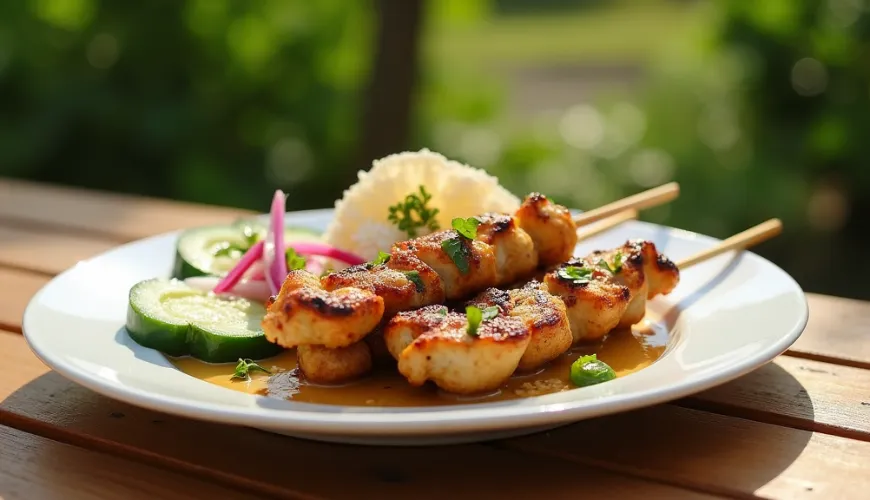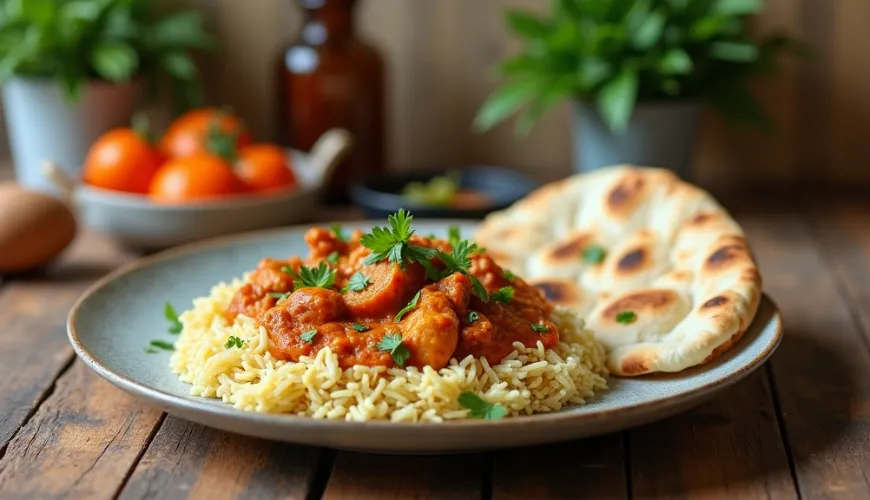
How to Make Chicken Satay Like a Professional at Home

What is Chicken Satay and Why You'll Love It
When you think of Southeast Asia, many people envision the aroma of exotic spices, golden-grilled meat, and bold sauces that give every dish its character. One of the most popular dishes from this region is chicken satay – grilled chicken skewers marinated in a spice blend, served with a thick, often peanut sauce. This simple yet flavor-rich dish has found its way not only into the hearts of locals but also onto the plates of food lovers worldwide.
Satay originated in Indonesia, specifically on the island of Java, but today it is also found in Malaysia, Thailand, Singapore, and the Philippines. Each country has its own version, but the basic idea remains the same – slices of meat skewered on sticks, marinated in an aromatic blend, and grilled to a golden finish, ideally over coals. Chicken has become the most popular choice because it is tender, quick to prepare, and absorbs the marinade flavor well.
The Secret to Delicious Chicken Satay is Not Just in the Meat
At first glance, it may seem like a simple dish, but as with most traditional foods, the key to a perfect result lies in the quality of ingredients and a carefully prepared marinade. This usually includes turmeric, coriander, cumin, garlic, ginger, lime juice, soy sauce, and sometimes coconut milk. The turmeric gives the meat its typical yellow-golden color, while the other ingredients provide depth of flavor.
For the juiciest and most fragrant meat, it's best to let it marinate for at least a few hours, ideally overnight. It is then skewered on bamboo sticks and grilled either over an open flame or in an oven, depending on availability and season.
It's worth mentioning that preparing satay can be a pleasant social activity. In many Southeast Asian households, satay is prepared on weekends or for festive occasions, where the family gathers, everyone helps prepare the skewers, and the evening is spent together over food and conversation.
The Sauce That Gives Satay Its Soul
However, it wouldn't be the same without the sauce, and it is the satay sauce that elevates this treat to a true culinary experience. Most commonly, it's a peanut sauce that combines saltiness, sweetness, a mild spiciness, and creamy consistency. It typically includes ground roasted peanuts, coconut milk, lime juice, fish sauce, palm sugar, and chili.
Making it at home is not difficult, especially if you have quality ingredients on hand. With a little patience and seasoning adjustment, you can achieve a result that tastes like it came from a street in Bangkok or a night market in Kuala Lumpur. If you don't have the time or desire to make the sauce from scratch, there are now many organic and natural options on the market that respect traditional recipes and do not contain unnecessary preservatives.
Surprisingly, satay sauce also pairs well with other dishes – for example, as a salad dressing, dip for grilled vegetables, or as an alternative to traditional sauces in homemade burgers.
Chicken Satay in Modern Cuisine
While chicken satay is a common street food in Asia, it is finding its way into modern kitchens focused on a healthy lifestyle. Chicken skewers with vegetables and nut sauce are perfect as a light dinner that satisfies but doesn't weigh you down. It looks good on the plate, has a rich flavor, and can easily be prepared from organic ingredients.
For example, organic chicken from sustainable farming, fair trade peanuts, and coconut milk without added substances not only ensure excellent taste but also a good feeling from sustainable cooking. Moreover, if you use leftover satay sauce the next day, you significantly reduce food waste.
One of the advantages of this dish is its versatility. Whether you decide to replace meat with tofu, tempeh, or vegetables, with a bit of creativity, you'll create a vegetarian or vegan version that tastes just as great. In Thailand, satay skewers are commonly made with shrimp, tofu, or lamb – and all these variations have their fans.
How to Serve Satay to Delight All the Senses
First impressions matter a lot – and with dishes like satay, it applies doubly. Skewers arranged in a fan shape, with a bowl of creamy sauce in the middle, complemented by pieces of cucumber, onion, and rice balls or rice cake (known as lontong), look like a dish from a luxury restaurant. Yet, they are made from simple ingredients, and preparation doesn't take much time.
At a family celebration or summer garden party, chicken satay is a guaranteed success. It's a dish eaten with hands, naturally bringing people closer together, and its aroma extends beyond the kitchen. Swapping classic grilled sausages for exotic skewers with peanut sauce is a fun challenge that refreshes any summer menu.
For example, when businesswoman Ivana, who is passionate about healthy eating in her free time, prepared satay skewers for friends at a garden party, she initially worried whether the food would appeal without typical Czech flavors. The result surprised her – after the first taste, the skewers disappeared quickly, and the sauce was gone to the last drop. "No one expected that chicken and peanuts could be something like this. It was just different – and great," she says with a smile.
Exoticism Without Regrets
For many people, the word "exotic" may be synonymous with something hard to obtain or complicated to prepare. However, chicken satay demonstrates that even an exotic dish can be simple, healthy, and sustainable. It only takes a few commonly available ingredients, some time for marinating, and a willingness to try something new.
And if you want to simplify some ingredients – for example, opting for already prepared satay sauce in organic quality, there's nothing wrong with that. The important thing is that you know what you're eating, where the ingredients come from, and that you enjoy the result to the fullest.
In a world where food is often seen merely as a necessity, dishes like chicken satay offer an opportunity to slow down, engage the senses, and truly savor the meal. Whether you prepare it just for yourself, for a partner, or for a whole group of friends, one thing is certain – this exotic dish will settle in with you much faster than you'd expect.
As an old Indonesian proverb says: “A meal for one is a meal for all when shared with heart.”

